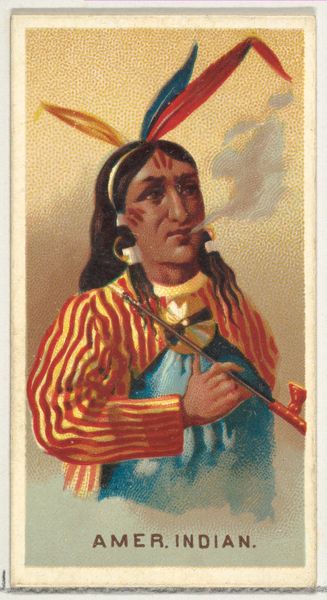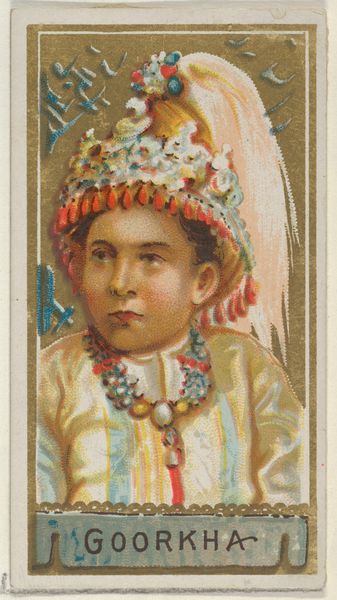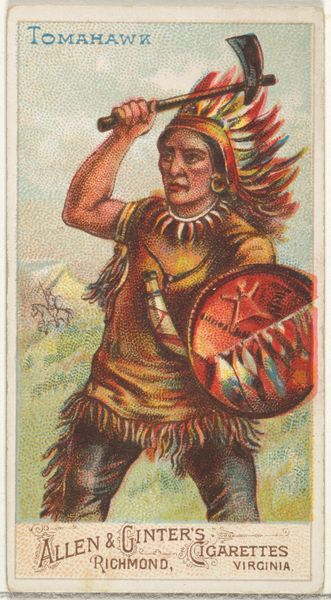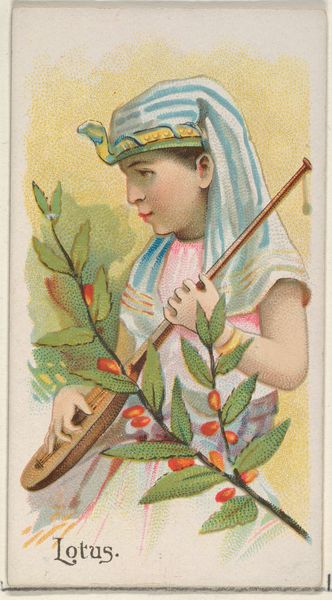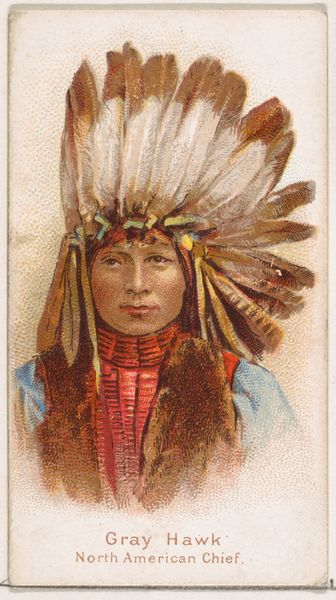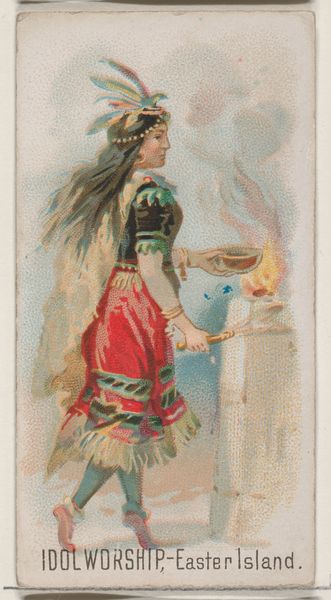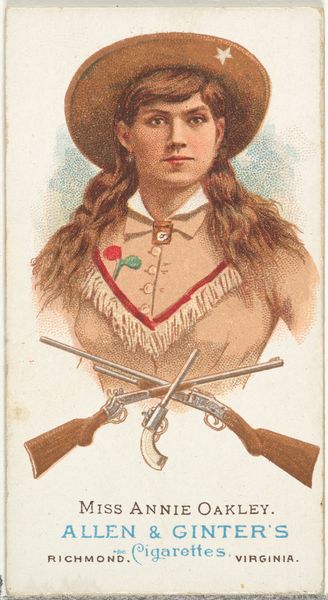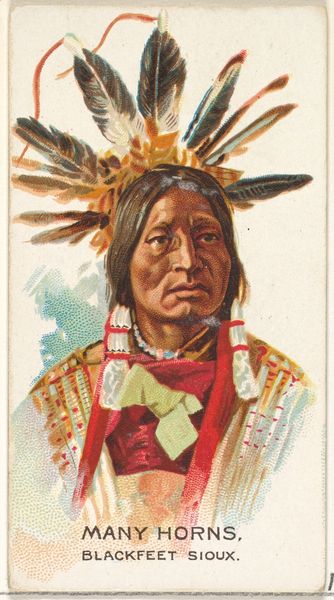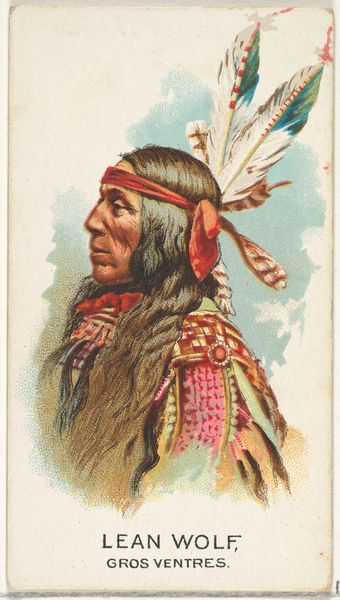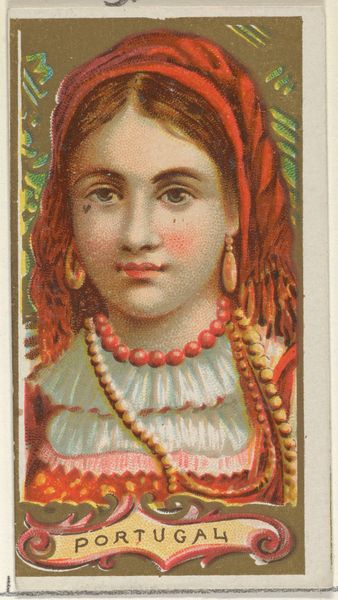
Papaw, from the Fruits series (N12) for Allen & Ginter Cigarettes Brands 1891
0:00
0:00
Dimensions: Sheet: 2 3/4 x 1 1/2 in. (7 x 3.8 cm)
Copyright: Public Domain
Editor: This small print, titled "Papaw," part of the "Fruits" series for Allen & Ginter Cigarettes, was created in 1891. The woman depicted, along with the stylistic elements, makes it feel reminiscent of Ukiyo-e art. How do we view a piece like this through its history? Curator: Considering the socio-political climate of the late 19th century is vital. This was a period of intense industrialization and expansion in the United States, often at the expense of Indigenous populations. How do you think the use of an Indigenous figure as a marketing tool reflects that era? Editor: It feels... exploitative, reducing a culture to a mere commodity for promoting tobacco. But I suppose, it was commonplace then? Curator: Sadly, yes. These cards, while seemingly innocuous, circulated images that reinforced colonial power dynamics. The "exoticizing" of the Indigenous figure within a consumerist framework helped normalize the displacement and erasure of Indigenous cultures. Editor: So, even a simple image of fruit, alongside a portrait, served a broader political purpose. Is that fair to say? Curator: Absolutely. It wasn't just about selling cigarettes; it was about solidifying a particular worldview – one where Indigenous peoples were romanticized, yet simultaneously relegated to the past, clearing the way for westward expansion and resource extraction. How does understanding this context change your perspective of the artwork? Editor: It makes me see the piece as not just a pretty picture, but a document of its time. The act of portraying an idealized Indigenous figure within a product aimed at mass consumption makes this art both aesthetically pleasing and socially problematic. Curator: Precisely. By understanding its original context, we recognize how these seemingly innocent images contributed to larger narratives of power and cultural appropriation, which were embedded in institutional systems. Editor: This has completely changed how I see similar imagery; it goes far beyond the visual level!
Comments
No comments
Be the first to comment and join the conversation on the ultimate creative platform.
